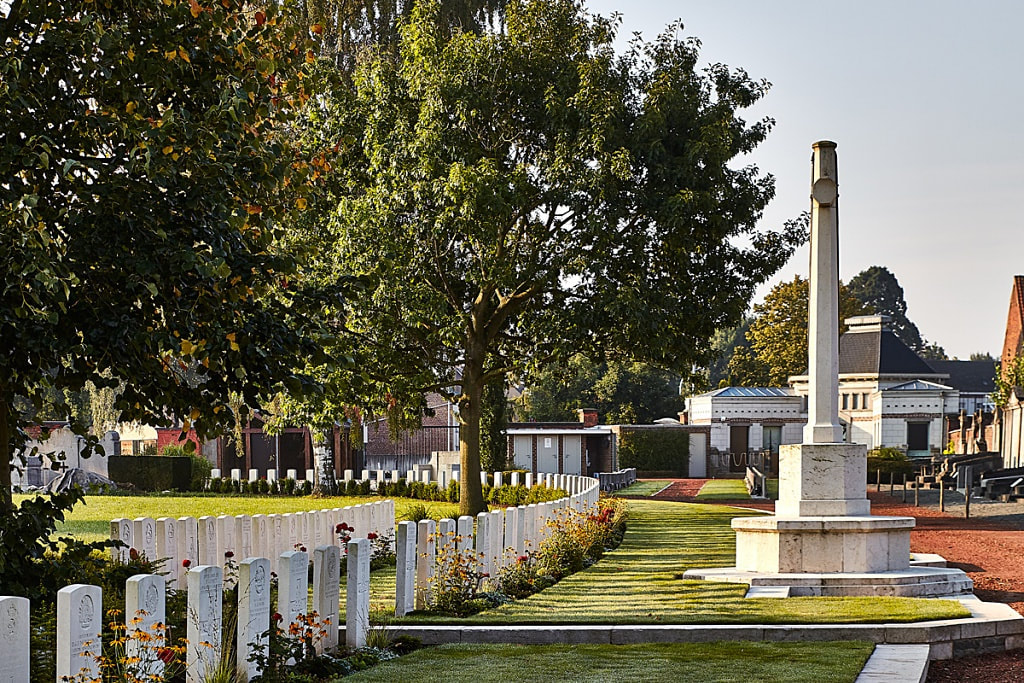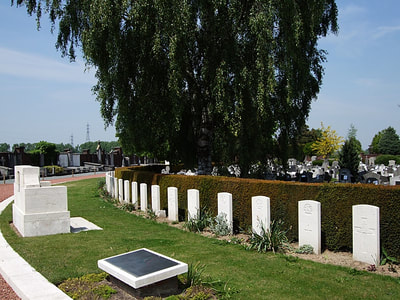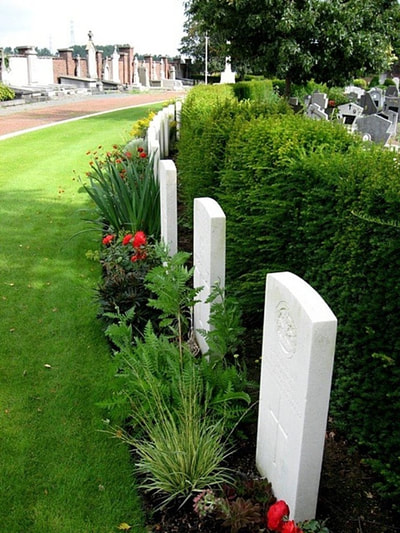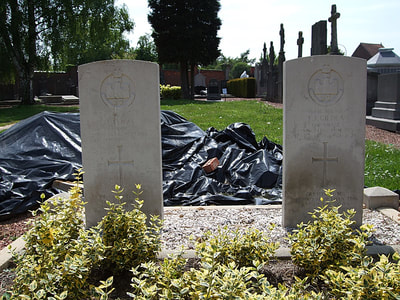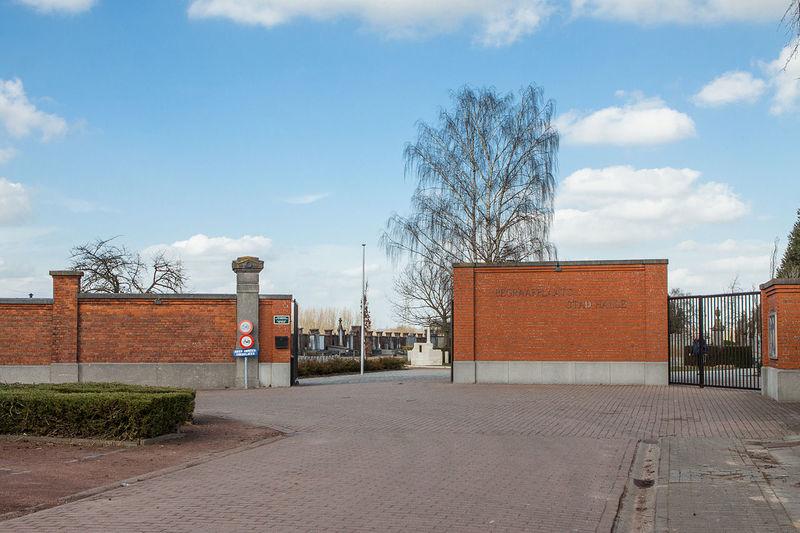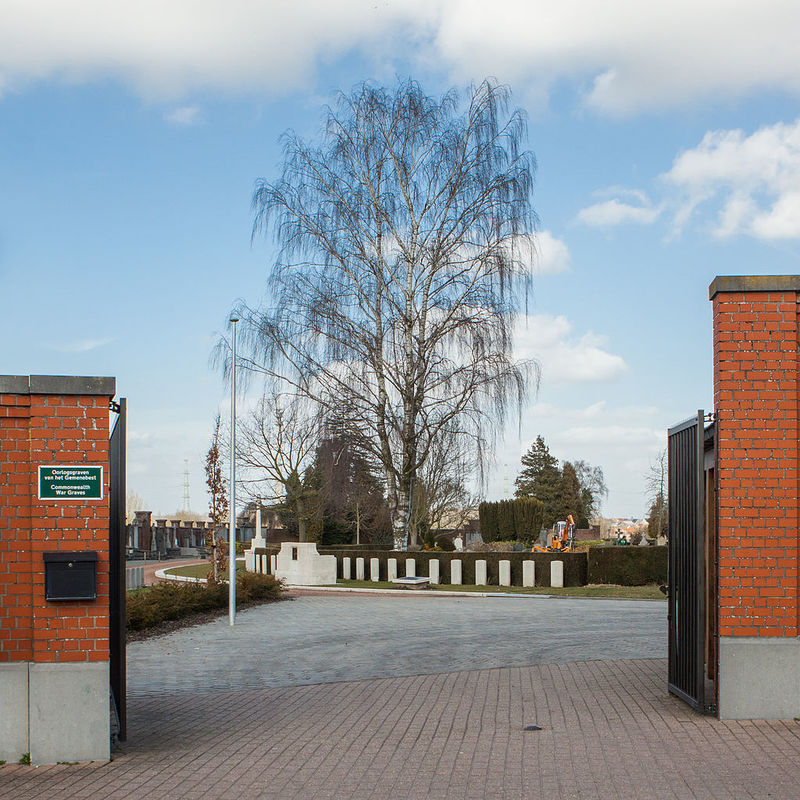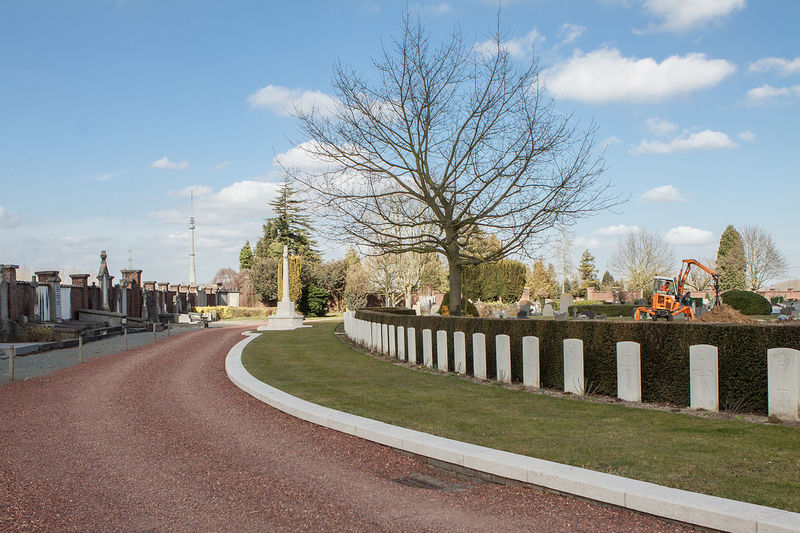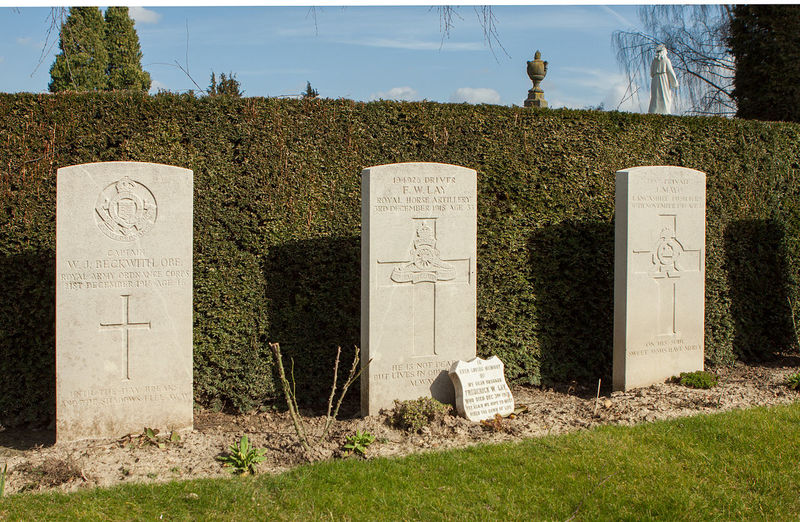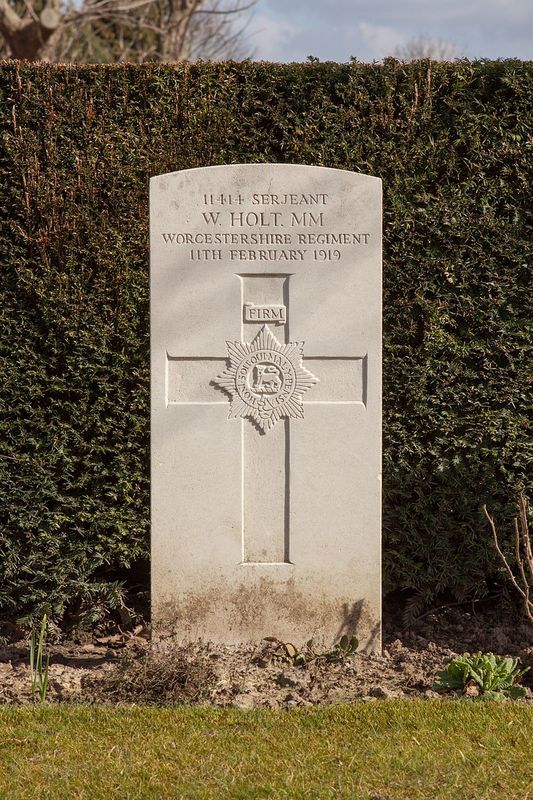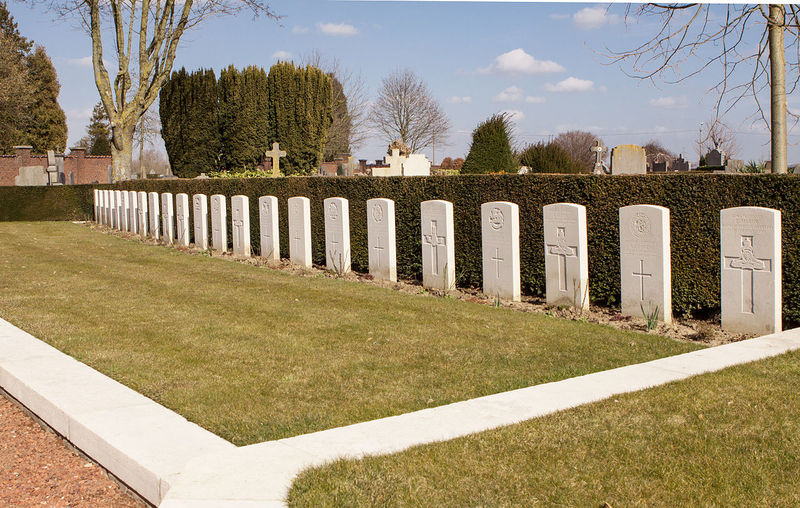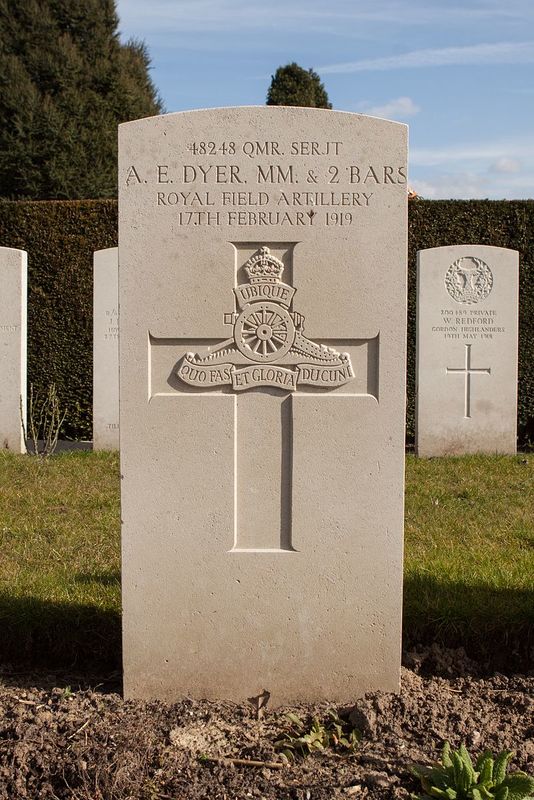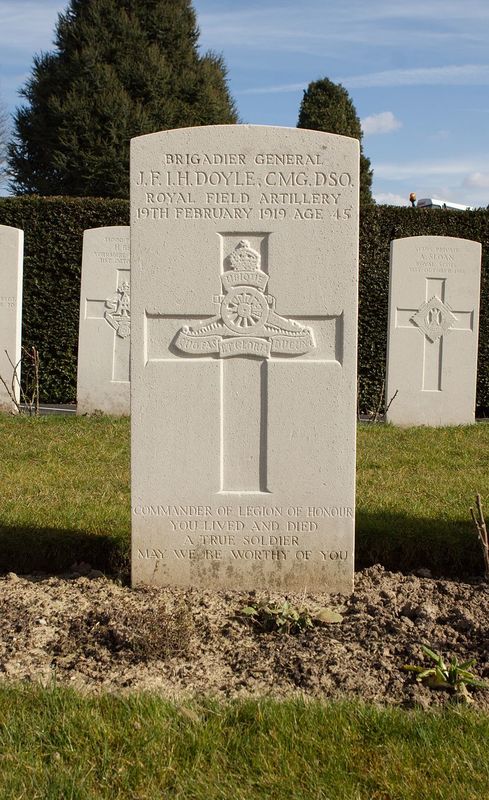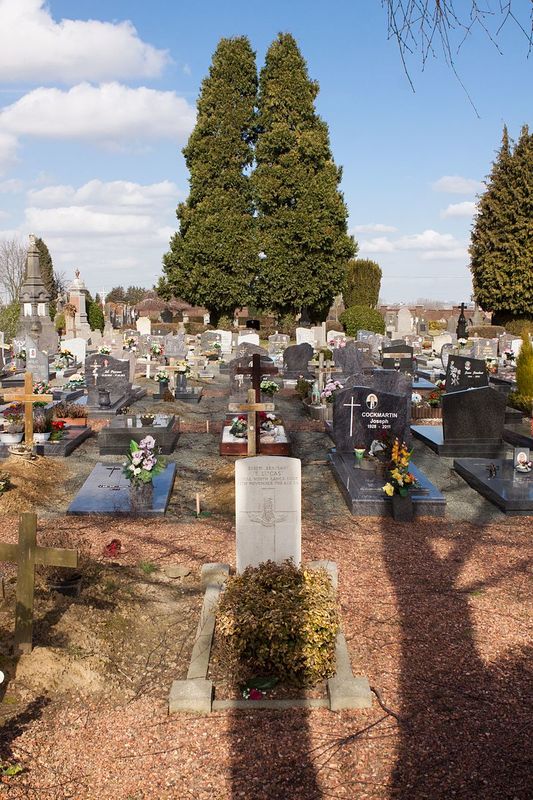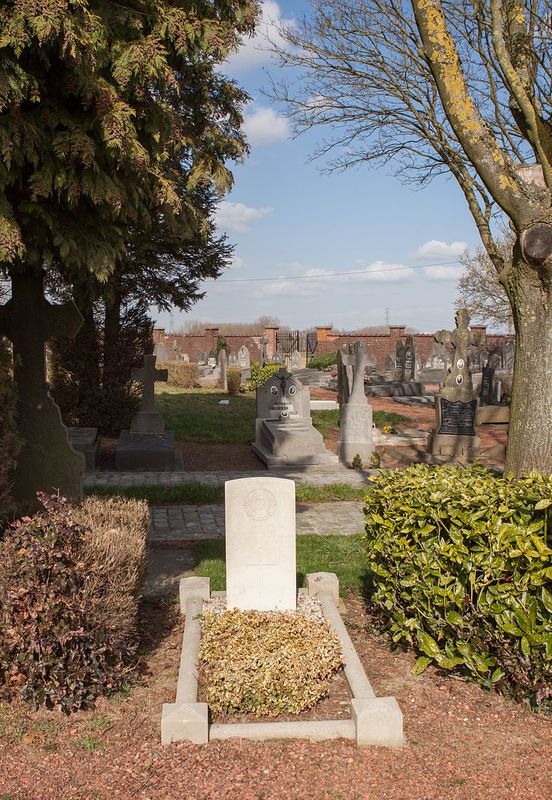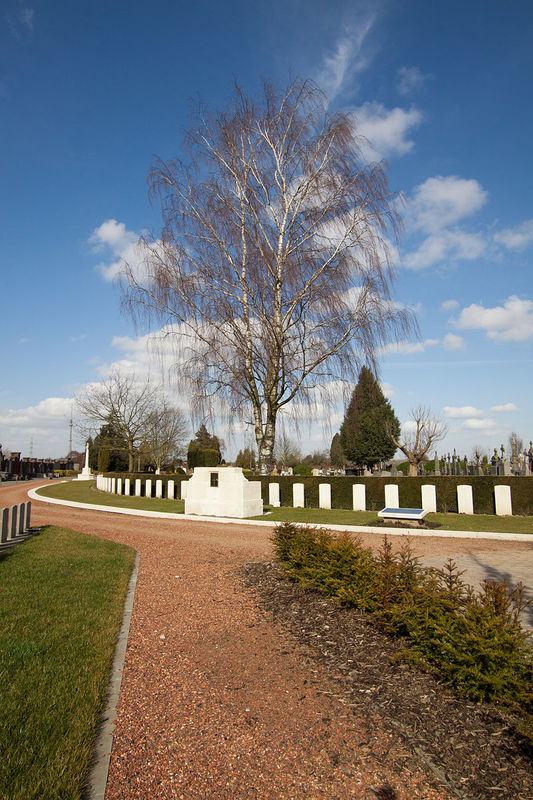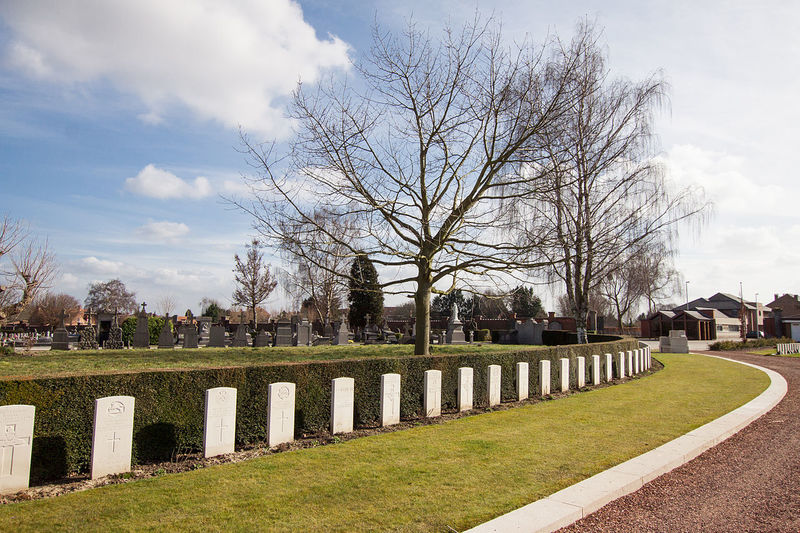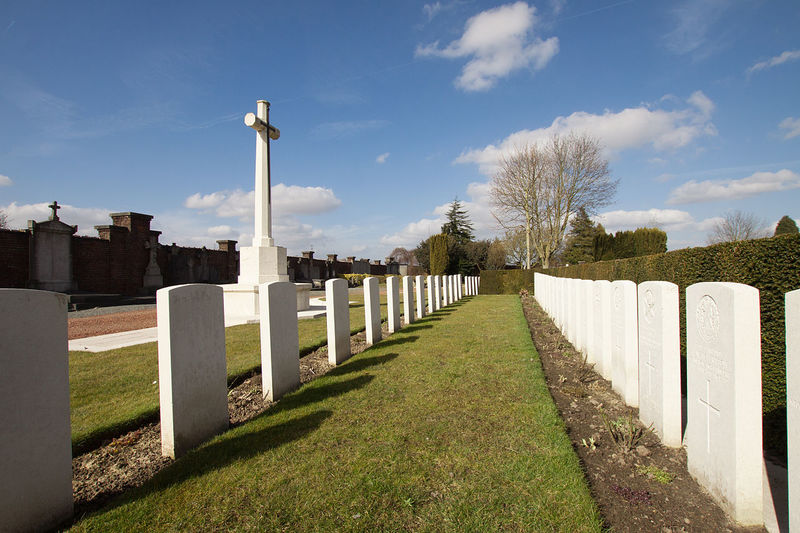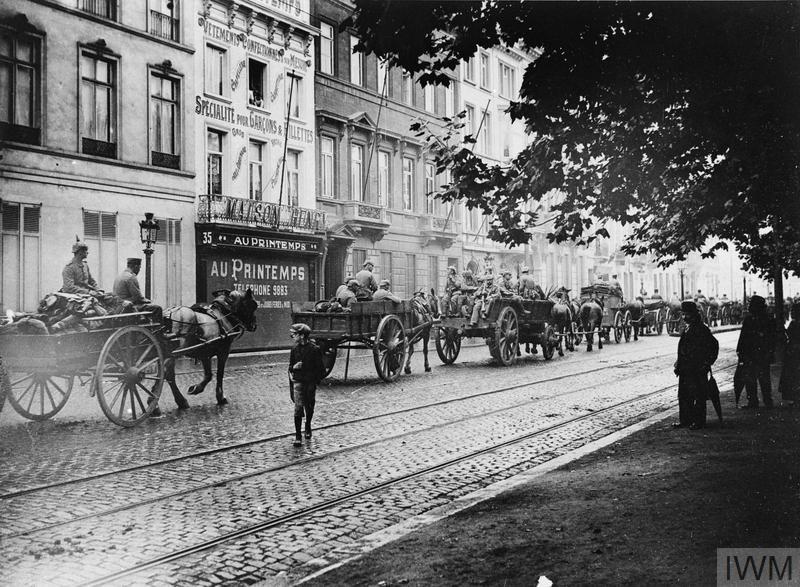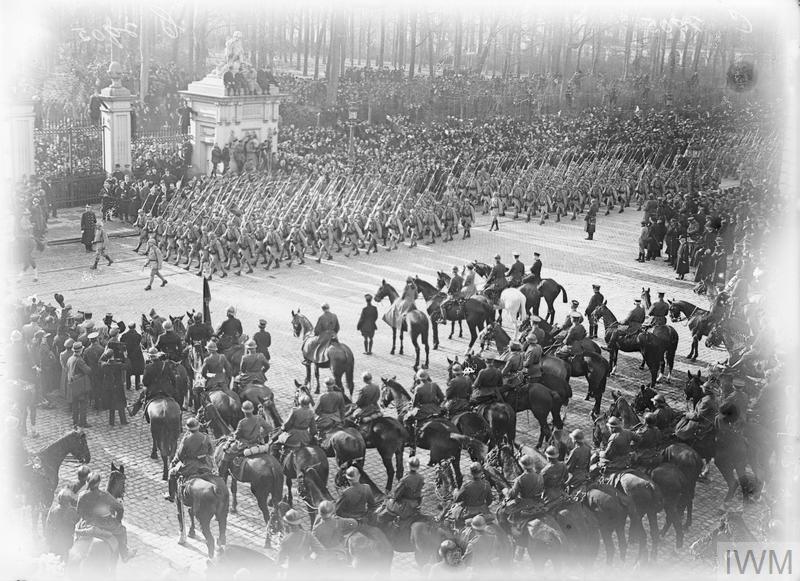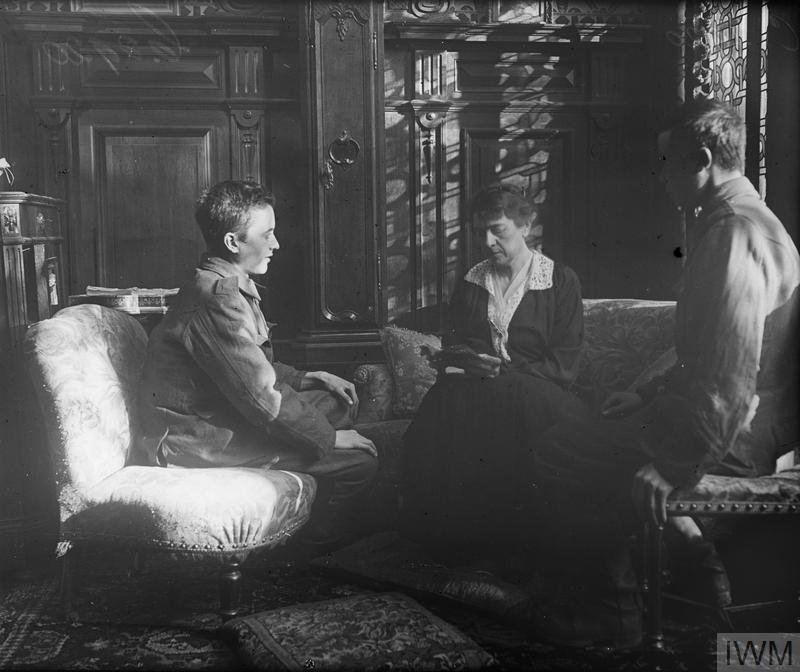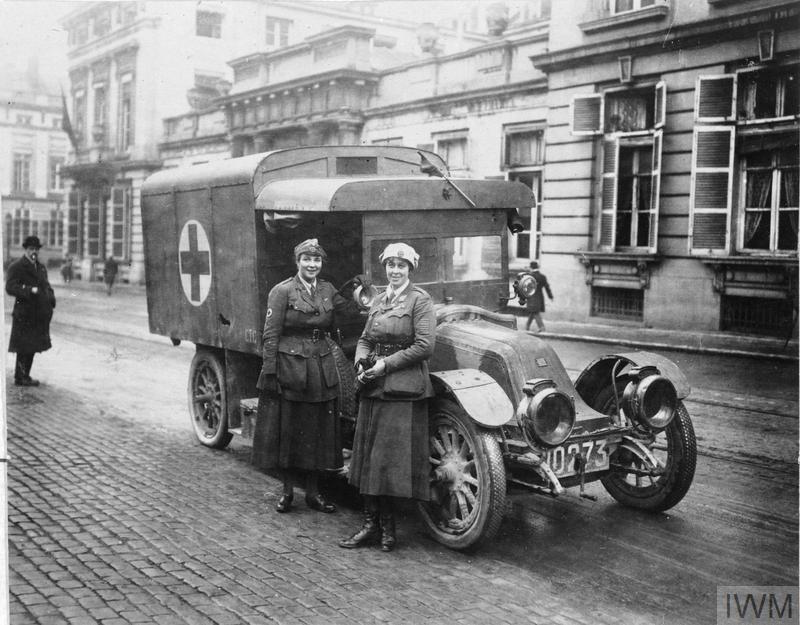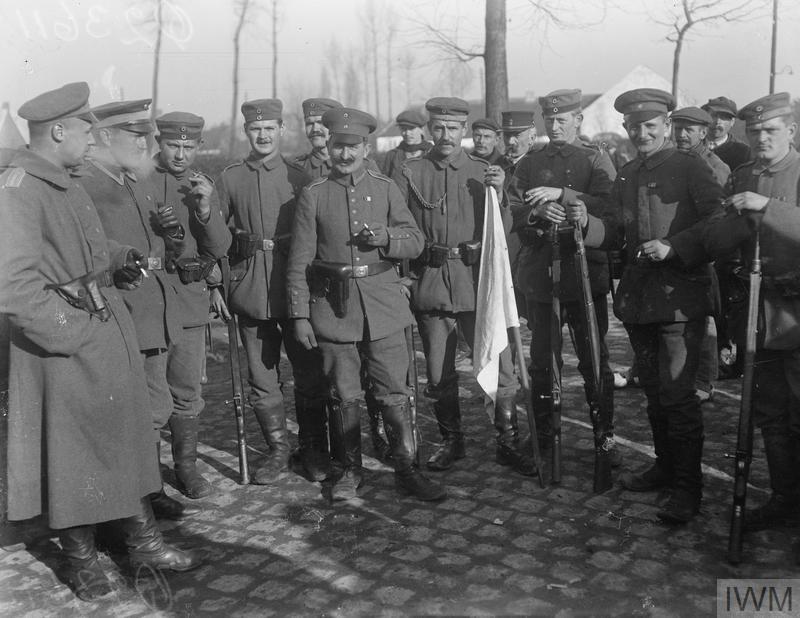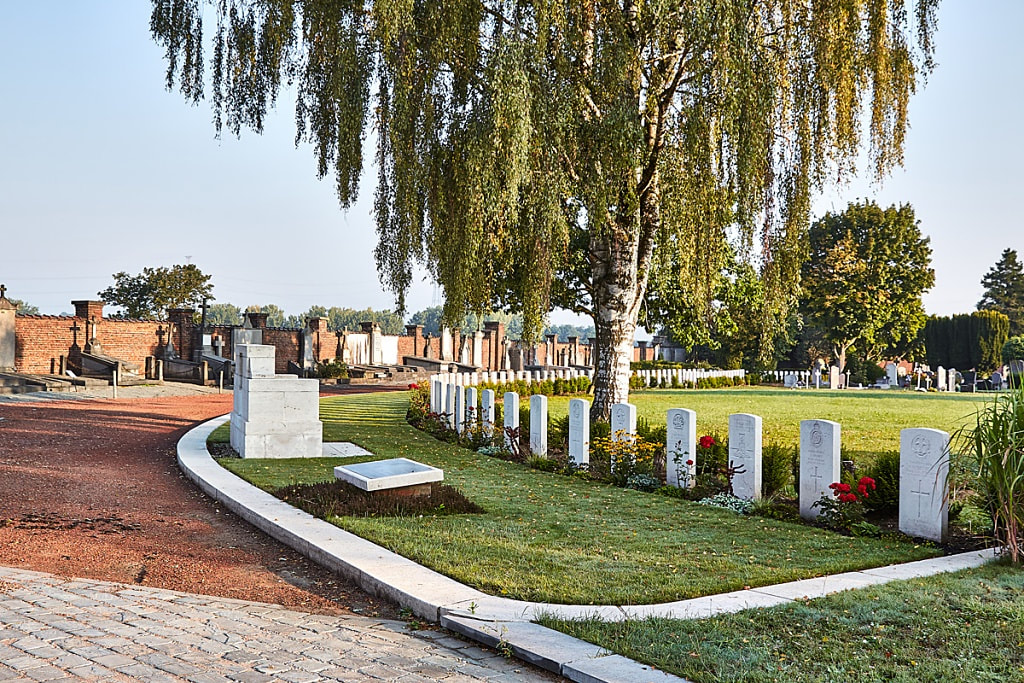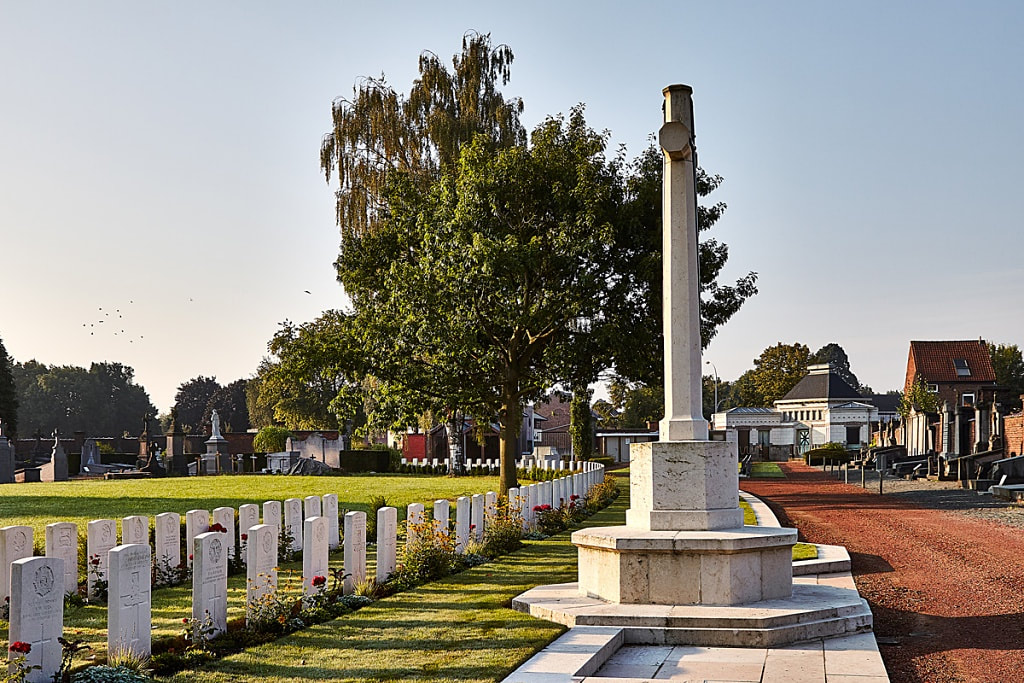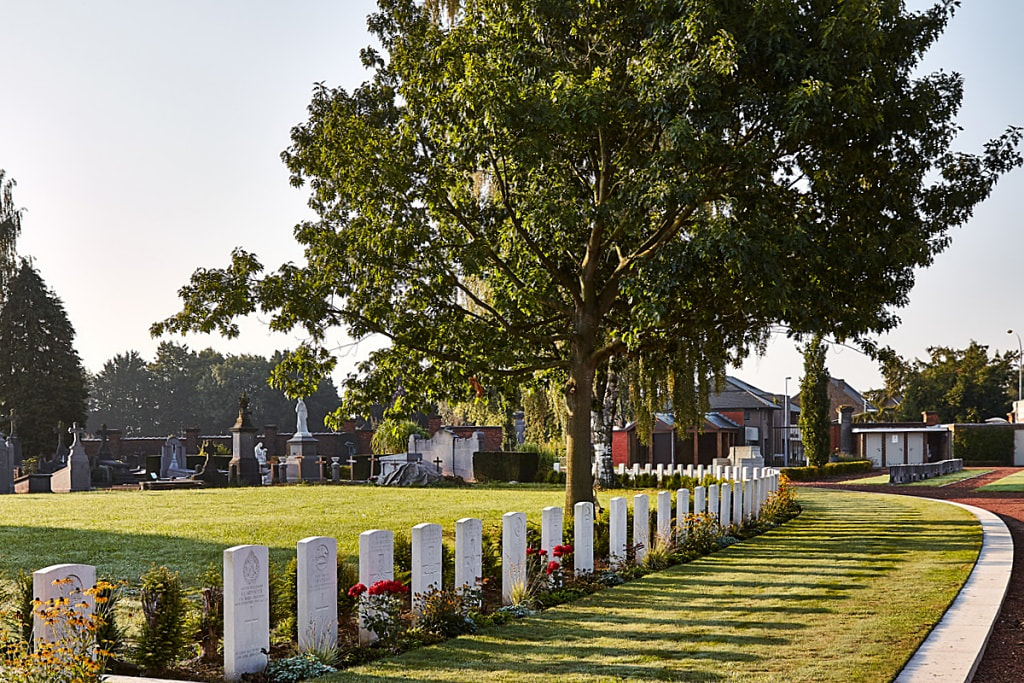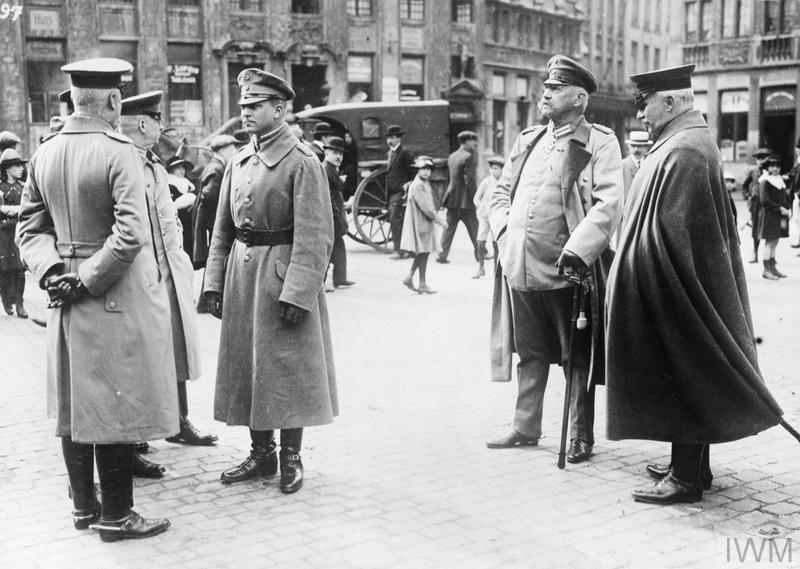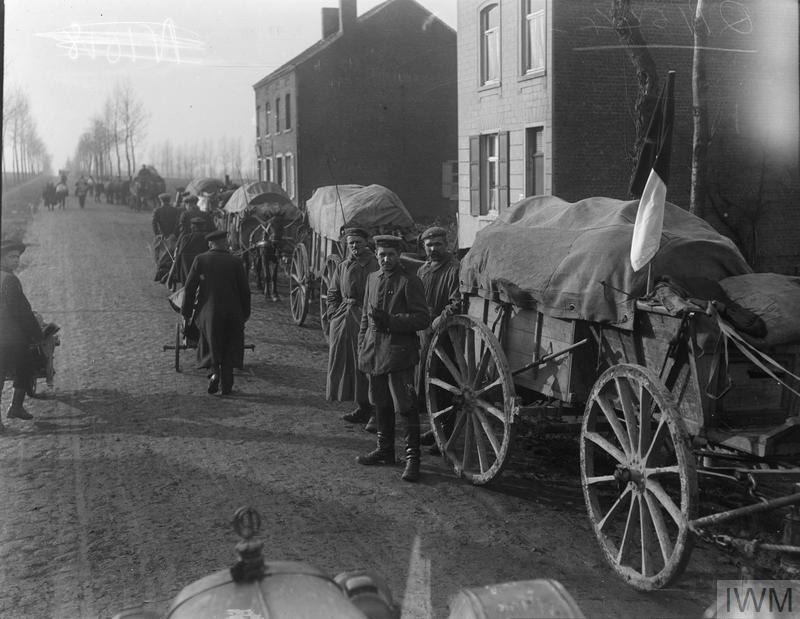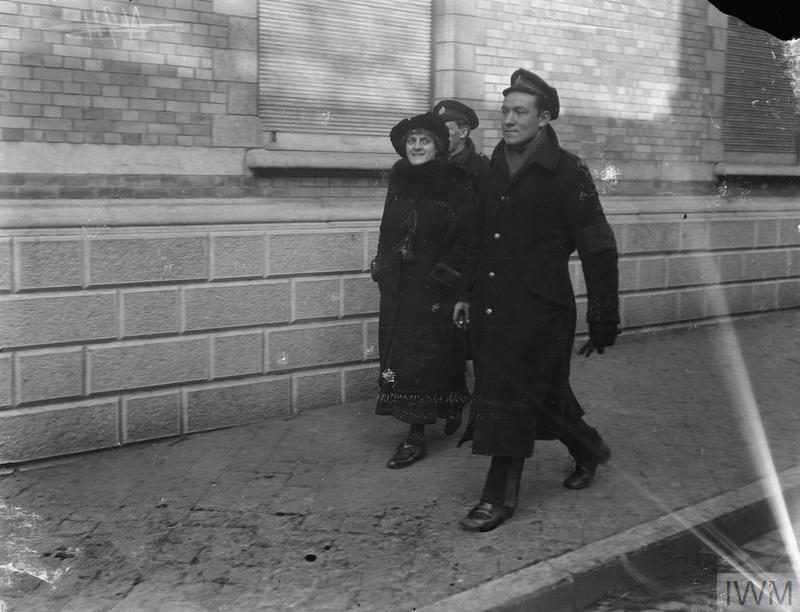HALLE COMMUNAL CEMETERY
Vlaams-Brabant
Belgium
GPS Coordinates: Latitude: 50.74497 Longitude: 4.22904
Location Information
Halle is a town 16 kilometres south-west of Brussels on the road to Mons and Tournai.
From the Ring Road RO around Brussels, turn off at Junction 20 and turn onto the Alsembergsesteenweg in the direction of Halle. At the end of the road turn left onto the N6 and then take the 6th turning on the right into Ninoofsesteenweg then immediately bare right into Cypriaan Verhavertstraat. After 400 metres turn right into Gaasbeeksesteenweg and after 200 metres the entrance of the cemetery is facing you with car parking in the front outside the gates. The cemetery can also be reached on foot from the train station after about a 15 minute walk.
Visiting Information
Wheelchair Access to the cemetery is possible via main entrance.
Historical Information
Halle Communal Cemetery was used by the Germans during the First World War, and after the Armistice, by the 1st Australian Casualty Clearing Station. It contains two rows of Commonwealth graves, along the west side, the nineteen in row B having been regrouped from the German plot at the north end. Two of the graves are in isolated positions elsewhere in the cemetery.
The cemetery contains 105 Commonwealth burials of the First World War. There are also two Second World War burials of May 1940 close to the First World War plot.
World War One Casualty Details: United Kingdom 101, Australia 2, Canada 1, India 1. Total 105.
World War Two Casualty Details: United Kingdom 2. Total 2.
The Commonwealth plot was designed by William Harrison Cowlishaw
Halle is a town 16 kilometres south-west of Brussels on the road to Mons and Tournai.
From the Ring Road RO around Brussels, turn off at Junction 20 and turn onto the Alsembergsesteenweg in the direction of Halle. At the end of the road turn left onto the N6 and then take the 6th turning on the right into Ninoofsesteenweg then immediately bare right into Cypriaan Verhavertstraat. After 400 metres turn right into Gaasbeeksesteenweg and after 200 metres the entrance of the cemetery is facing you with car parking in the front outside the gates. The cemetery can also be reached on foot from the train station after about a 15 minute walk.
Visiting Information
Wheelchair Access to the cemetery is possible via main entrance.
Historical Information
Halle Communal Cemetery was used by the Germans during the First World War, and after the Armistice, by the 1st Australian Casualty Clearing Station. It contains two rows of Commonwealth graves, along the west side, the nineteen in row B having been regrouped from the German plot at the north end. Two of the graves are in isolated positions elsewhere in the cemetery.
The cemetery contains 105 Commonwealth burials of the First World War. There are also two Second World War burials of May 1940 close to the First World War plot.
World War One Casualty Details: United Kingdom 101, Australia 2, Canada 1, India 1. Total 105.
World War Two Casualty Details: United Kingdom 2. Total 2.
The Commonwealth plot was designed by William Harrison Cowlishaw
Images in this gallery © Werner Van Caneghem
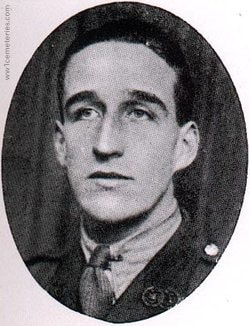
Lieutenant
George Macdonald Bruce
4th Bn. Argyll and Sutherland Highlanders
17th February 1919, aged 21.
Row A. 52.
Son of the Rev. George Bruce and Margaret Christina Learmouth Bruce, of The Manse, Lochluichart, Ross-shire.
His headstone bears the inscription "Are There Not Twelve Hours In The Day"
George Macdonald Bruce
4th Bn. Argyll and Sutherland Highlanders
17th February 1919, aged 21.
Row A. 52.
Son of the Rev. George Bruce and Margaret Christina Learmouth Bruce, of The Manse, Lochluichart, Ross-shire.
His headstone bears the inscription "Are There Not Twelve Hours In The Day"
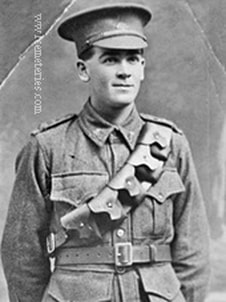
2705 Farrier Sergeant
John Arthur Curnow
14th Field Coy. Australian Engineers
15th February 1919, aged 23.
Row A. 48.
Son of Robert and Elizabeth Curnow, of The Britain, Emmaville, New South Wales.
His headstone bears the inscription "He Died As He Lived Nobly"
A blacksmith and farrier prior to enlistment, he embarked from Sydney aboard HMAT Suffolk on 22 December 1915. Promoted to the rank of Farrier Sergeant (Farr Sgt) in February 1917, he was later transferred to the 14th Field Company Engineers. Shortly after the end of the war, Farr Sgt Curnow was admitted to hospital in Belgium, where he died of pneumonia on 15 February 1919, aged 23.
John Arthur Curnow
14th Field Coy. Australian Engineers
15th February 1919, aged 23.
Row A. 48.
Son of Robert and Elizabeth Curnow, of The Britain, Emmaville, New South Wales.
His headstone bears the inscription "He Died As He Lived Nobly"
A blacksmith and farrier prior to enlistment, he embarked from Sydney aboard HMAT Suffolk on 22 December 1915. Promoted to the rank of Farrier Sergeant (Farr Sgt) in February 1917, he was later transferred to the 14th Field Company Engineers. Shortly after the end of the war, Farr Sgt Curnow was admitted to hospital in Belgium, where he died of pneumonia on 15 February 1919, aged 23.
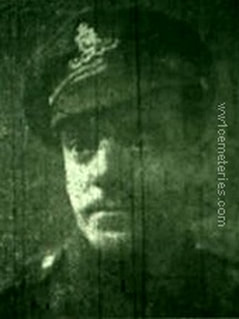
204674 Gunner
Edward Mason
15th Siege Bty. Royal Garrison Artillery
19th February 1919, aged 31.
Row A. 62.
Husband of Agnes O. Mason, of Morecambe, Lancs.
Edward Mason
15th Siege Bty. Royal Garrison Artillery
19th February 1919, aged 31.
Row A. 62.
Husband of Agnes O. Mason, of Morecambe, Lancs.
Images in this gallery © Geerhard Joos
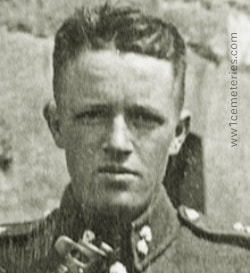
6976636 Serjeant
Thomas James Gildea
2nd Bn. Royal Inniskilling Fusliers
17th May 1940, aged 28.
Grave 2.
Son of Robert and Hester Gildea, of Cookstown, Co. Tyrone, Northern Ireland; husband of Sally Gildea, of Cookstown.
His headstone bears the inscription "Greater Love Hath No Man Than This, That He Lay Down His Life For His Friends"
Thomas James Gildea
2nd Bn. Royal Inniskilling Fusliers
17th May 1940, aged 28.
Grave 2.
Son of Robert and Hester Gildea, of Cookstown, Co. Tyrone, Northern Ireland; husband of Sally Gildea, of Cookstown.
His headstone bears the inscription "Greater Love Hath No Man Than This, That He Lay Down His Life For His Friends"

